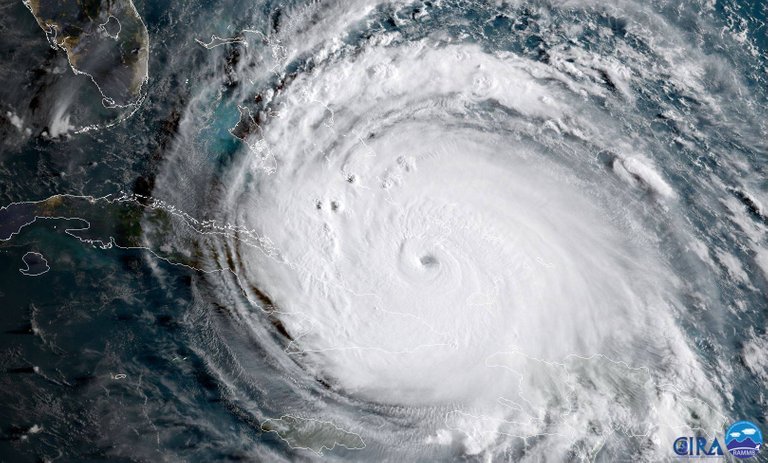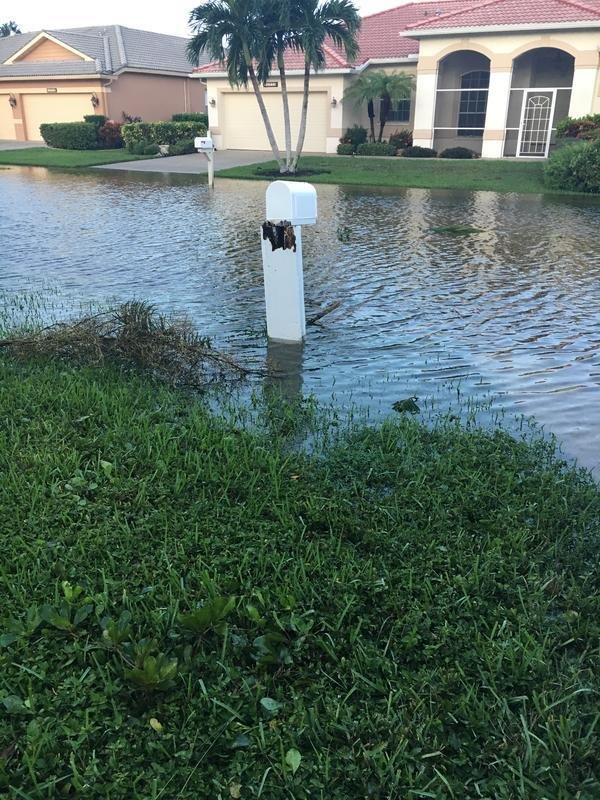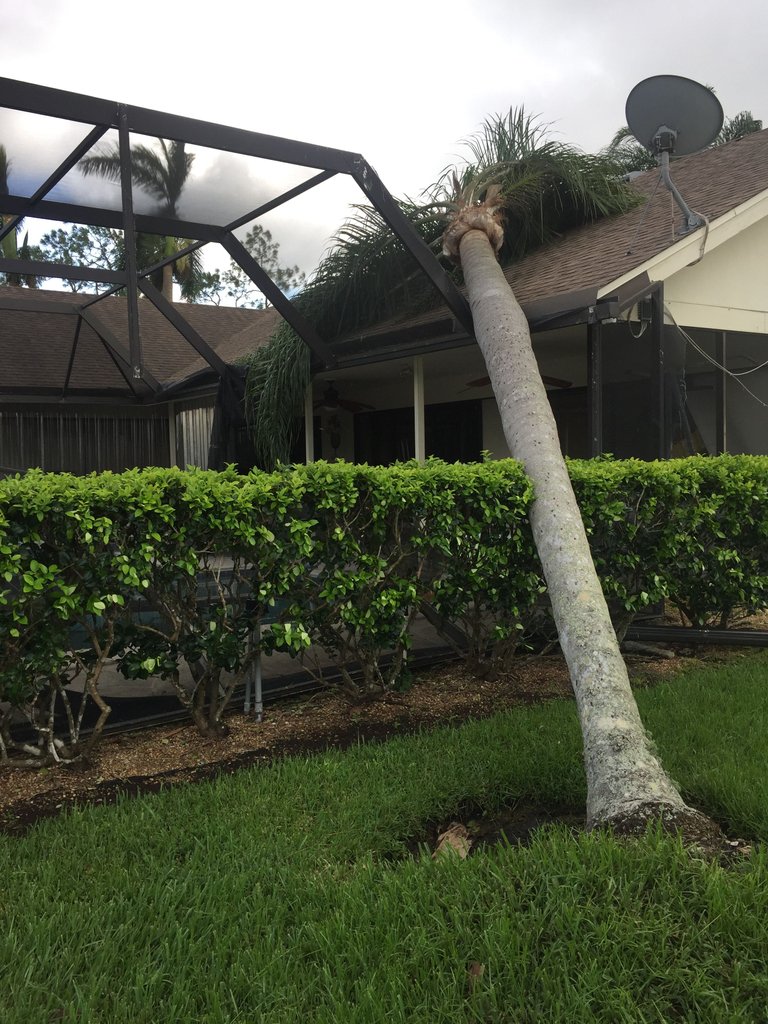
I'm on the southwest coast of Florida, which is no stranger to hurricanes, but historically has been pretty lucky to avoid most major storms. Hurricane Charley was an exception in 2004, which turned directly onto the southwest coast and made landfall as a category 4 storm. Charley was the cause for much of the housing code reform related to improving stability against hurricanes and any home built since 2004 has many improvements including mandatory hurricane shutters. Irma was forming in the Atlantic as a massive category 5 storm, three times as wide as the state of Florida.
I, like most people in this area, though, am a transplant from the northern US and have not yet experienced a major storm in my backyard... until now. For those of you unfamiliar with the hurricane scales, let me give you a brief refresher:
Tropical Depression: <39 MPH (<63 KM/H)
Tropical Storm: 39-73 MPH (63-118 KM/H)
Category 1 Hurricane: 74-95 MPH (119-153 KM/H)
Category 2 Hurricane: 96-110 MPH (154-177 KM/H)
Category 3 Hurricane: 111-129 MPH (178-208 KM/H)
Category 4 Hurricane: 130-156 MPH (209-251 KM/H)
Category 5 Hurricane: >156 MPH (252 KM/H)
After completely devastating several Caribbean islands as a huge category 5 storm, Irma moved past Puerto Rico to the north causing enough damage to black out the island for what we are told could be months. Irma rambled over parts of the Bahamas and dipped into Cuba weakening to a category 2 storm. Irma then turned north toward the Florida peninsula, regaining strength in the warm waters. When the eye finally made landfall on Collier county in southwest Florida, the winds were sustained at approximately 115 mph, which is a weak category 3 hurricane.
By this time many people had boarded up their homes and evacuated the state. Unfortunately, both my wife and I work in the hospital and are not permitted to evacuate. We sealed all of our windows and doors with plastic and towels in preparation of the sideways 100mph rain, stocked the pantry with batteries, water, canned goods, booze, and junk food, and then I sent my wife to the hospital before the winds reached 40 mph (when they stop emergency services and lock down the hospital) because she would be working the entire time. I took the dogs to a friends house so I had someone to ride the storm out with, and because we believed our house would flood from rain and storm surge. This brings me to my next concern.

NOAA was predicting that the greatest damage was going to come from the 6-12 feet of storm surge we would experience on the southwest Florida coastline... starting about 12 hours after the storm moved north and the winds had moved on. For those of you unfamiliar with this concept, the hurricane would temporarily push the water level up, due to the cyclical winds as it passed over us. This would cause 2-3 floors of beach front property to be underwater, but this level of water would push much farther inland, causing massive damage, potentially taking lives in the process. Homes that were in the 15 feet and below range to sea level needed to be evacuated and on the southwest coast that means a huge number of people. Hysteria ensued, shelters became stuffed with people, the hospitals were overcrowded by 200-400% their capacity to accommodate people who would need power to run their ventilators, BIPAPS, etc, along with staff and their families and pets.
So Sunday morning September 10th the power goes out at our house. Winds continue to build to just over 100 MPH. We walked the dogs when the eye of the storm passed over and the debris was incredible already (pictures below)... Fortunately for us, the south side of the storm began to break up as it passed over us and drastically reduced the amount of surge we received. Streets flooded, but no cars were swept away in 10 feet of water. Power was out for 90% of homes and businesses, though, which means a few things you don't realize if you don't live through it...
1. Police curfew: This is imposed to prevent looting and also to keep people from driving after dark when most traffic lights are not functioning. Non-functioning traffic lights should be treated as a four-way stop, but if you can't see the lights, people don't know where to stop and accidents happen.
2. No gas: People filled up for mass exodus and to run their generators when power went out. Now with debris everywhere it will be days before the tanks are refilled and power is restored.
3. Raw sewage: When the power goes out, the pumps that run communal sewage to treatment plants don't work. If people continue to produce waste water, it will eventually overflow the system. This then contaminates water supplies and requires water to be boiled before use.
It is now Saturday September 16th and I still have no power, along with about half of the county, despite the fact that line workers have been repairing the system non-stop since they were cleared to start working after the storm passed. There is shit in the street. A curfew is still in place for several places across southwest Florida. I have worked every day either at the hospital or cleaning up from the storm. Even though I have found myself grumbling a few times this week, I am thankful that my home is dry and in one piece and that all of my friends and family are safe. Amidst all of what I have experienced over the last week, I feel that I have observed some of the best and some of the worst of what the human race has to offer. Here are some examples of what I've seen so far...
The good
People helping the elderly in their neighborhoods hang storm shutters
People sharing hot food from their grills with their neighbors without power
People with power offering a hot shower or a reprieve to A/C (it's been 90 degrees daily) to those without
Neighbors cutting up downed trees and cleaning up debris together
Restaurants cooking and giving away food after the storm (so that it doesn't spoil without power)
The bad
People charging $50 per window to hang storm shutters
People selling bottled water for $40 dollars a case when it was sold out in stores
People who have a second home in Florida having little understanding/sympathy for what their neighbors are going through during a natural disaster
The POTUS making a visit to southwest Florida about his election/campaign instead of the people who lost everything
The takeaway
It will be weeks before power is restored to everyone in Florida. It's a huge, sweaty, inconvenience. But, we will wait patiently. I am thankful that our state and country has the resources to rebuild the infrastructure that has been damaged to the tune of billions of dollars. The country of Barbuda, which took a direct hit from category 5 Irma has been reduced to rubble and all 1600 some-odd citizens were evacuated due to the damage which could take years to repair. Overall, what I saw this week was people helping each other overcome adversity. When all is said and done, this week will have made me a little wiser, a little smellier, and a lot more resilient.





Damn dude, that's crazy. I'm glad you're ok. We had some ridiculously smokey days last month because of the wild fires out here. People with asthma were having attacks.
There were also scores of people everywhere I went that were wearing cheap Dollar Store dust masks. It was pretty funny.
Finally starting to get back to normal. Just waiting on the FEMA trucks to pick up all the downed trees that are piled up everywhere. Power got turned on after 8 days.
Thanksss!!!!!!!!Hi, I just upvoted this great post and hoping you could do the same to this post of mine: https://steemit.com/introduceyourself/@glasscannon/hola-steemit-its-nishant-xd